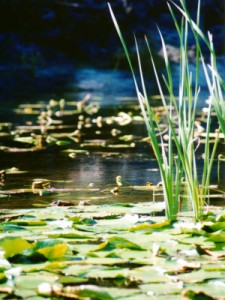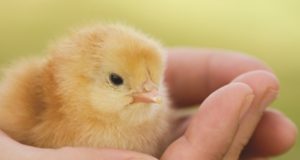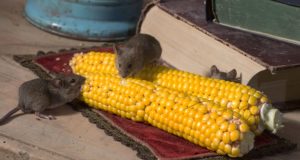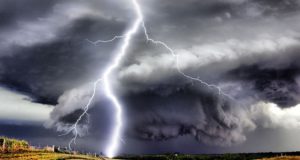 If you are looking for a natural and easy way to add interest to your property and to encourage native species to take up residence, consider making a pond. I am not referring to a pool with koi and other store-bought fish, but rather a wildlife pond. This is a natural feature that you can create and then allow nature to do its work. If you do it right, you will get all kinds of wildlife moving in, from toads and salamanders to birds, dragonflies, and even turtles. With a little initial effort and investment, you can create a serene oasis right in your backyard.
If you are looking for a natural and easy way to add interest to your property and to encourage native species to take up residence, consider making a pond. I am not referring to a pool with koi and other store-bought fish, but rather a wildlife pond. This is a natural feature that you can create and then allow nature to do its work. If you do it right, you will get all kinds of wildlife moving in, from toads and salamanders to birds, dragonflies, and even turtles. With a little initial effort and investment, you can create a serene oasis right in your backyard.
Getting Started
As we are entering fall and approaching winter, gardening projects may be the furthest things from your mind. However, this time of year is great for planning. As you watch the leaves come down and you tidy up your lawn and garden, you can start thinking about next spring. In fact, the best time of year for putting in your new pond is the end of winter or the very beginning of spring. Whenever the weather in your area is suitable for digging in to the ground and spending a couple hours outdoors working on your project is the right time to get started. It is possible to start digging out your pond in the fall; however, you won’t be able to put your final touches on it so the shape may disintegrate over the course of the winter.
The next step towards making your pond is to decide where to put it and what size and shape it will be. The best location is somewhere that will allow you to enjoy it. To attract the most wildlife, you do not want to put it too close to the house. On the other hand, you want to be able to see it, so avoid putting it in too obscure a spot. You may also want to avoid making your pond under a tree because of the roots and the falling leaves, which will clog up the pond. Full sun is not great either, because the pond can get too hot, evaporate, and develop algae blooms.
Once you have a plan for the size, shape, and location, you need the right materials. For creating your own pond, you will need at a minimum, a shovel, level, pond underlay, pond liner, and water. The underlay can be old piece of carpet, or can be purchased from a garden supplier. The liner should be purchased from a garden supplier. In addition to the basic materials, you will also want to consider plants that you will put in around the pond as well as any rocks, gravel, or water features that you may want to add.
Digging The Pond
The hardest part of this project will be digging out the pond. Mark out an area first for the shape and size that you want. Dig it out such that you end up with different depths. Most of the pond should be fairly shallow, around four to six inches. You can dig out a deeper section to about twelve to eighteen inches. Shallow areas are important for much of the wildlife that will inhabit the pond, but a deep section will help some of your little friends overwinter.
Another important consideration when digging out the pond is to make some areas of the pond edge gently sloping. Certain kinds of wildlife may fall into your pond and be unable to get out, like squirrels and chipmunks. Also, your salamanders, turtles, and frogs will appreciate a gentle entry and exit. Your edges will also need to be level. If it is not the same height all the way around, your water will drain out unevenly. Digging the hole for the pond is the most time- and labor-intensive step, but it is also the most important. Take the time to get it right, or you will end up with an unsatisfactory pond and will want to tear it out and start over again.
Line And Fill
Smooth out the edges of your pond and double check how level it is. Make sure there are no sharp objects sticking out, like rocks or sticks, and then put in your underlay or old carpet. Press it into the sides and bottoms of the pond so that it conforms to the shape you want. Put the liner on top of the underlay. Center it in the middle of the pond and press it down so that the liner creases along the sides of the pond. Put water in the deepest part to hold the liner in place. You can also use rocks for now if you are not ready to put water in yet.
Once you are ready to fill the pond, the water will keep the liner in place. Your hose water, however, may not be right for your pond. Check with your water company to see if you can use it in a pond or if there is too much chlorine. If your water is not suitable, you have a couple of options. You could purchase something to remove the chlorine or you can let rainwater fill the pond.
You may also want to include some water from a natural pond. This is a great way to introduce wildlife right into your pond. You may get some tadpoles if you scoop water out at the right time of year. Additionally, you will add all the microbes that your pond needs to become a healthy ecosystem.
Use large rocks to hold the liner in place, and after one rain, you should be able to remove them. Once the pond is full, trim off the edges of the liner and underlay material. If you are planning to edge the pond with stones, leave several inches of the liner in place and put your rocks on top of it. Just remember that you need some areas to have a gentle slope, so do not put a steep rock ledge all the way around the pond.
Finishing Touches
Once you have the above steps completed, it’s time to do the fun stuff. Your pond will need plants, both around the edges and in the pond itself to have a fully developed pond ecosystem. The wildlife that will be attracted to your pond will need plants for cover and protection from predators. For diversity in wildlife, you should have a diversity of plants.
Submerged plants are those that will add oxygen to the water and are essential to the health of the pond. Water lilies are one example. Marginal plants, those that grow around the edge of the pond, are needed to create habitats for insects and cover for other animals. Irises, flowering rush, spearwort, and water plantain are good choices for marginal plantings. Also consider St John’s wort, marsh marigold, watercress, water forget-me-not, and other bog plants. If you are unsure about what plants to use or if you want to use native species only, visit your local gardening center for advice.
Waterfalls and fountains can add a nice touch. You will need a pump to get the water moving, and if you have never done it before, consider getting someone to help with installation. Birds are actually attracted to moving water, and it should not disrupt other wildlife. There is no need to add any animals, other than your bucket full of pond water. Let the wildlife come to you and enjoy!
©2012 Off the Grid News
 Off The Grid News Better Ideas For Off The Grid Living
Off The Grid News Better Ideas For Off The Grid Living



